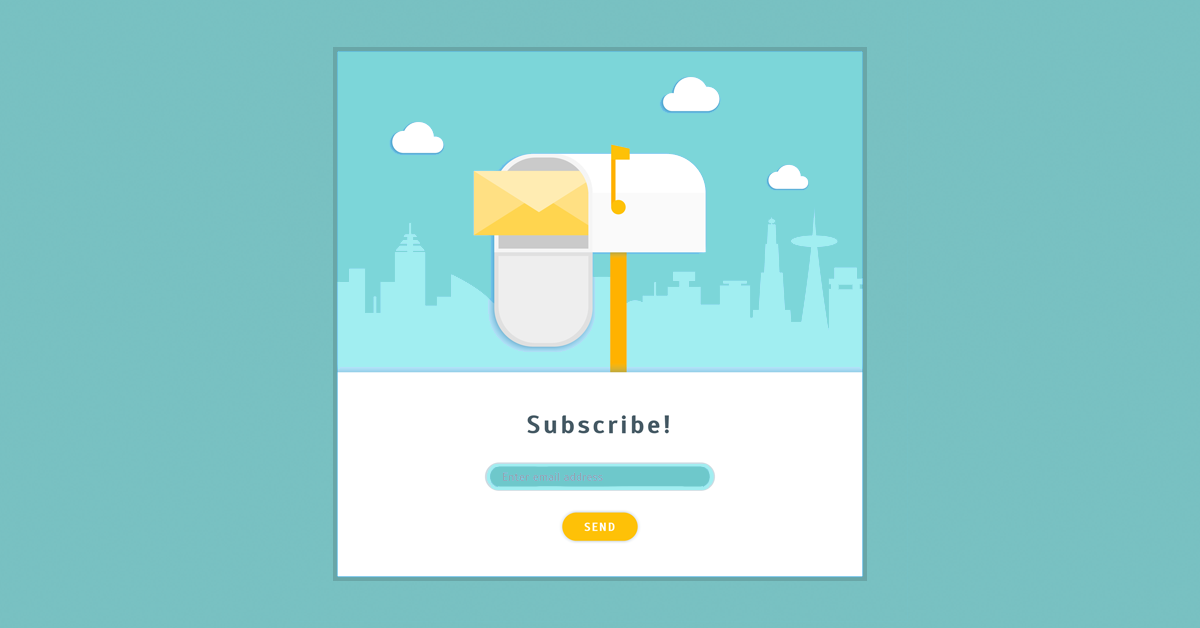Opt-in email marketing isn’t a new concept. In fact, marketing teams have been using these principles for decades.
When it comes to email marketing campaigns, opt-in marketing (also known as permission marketing) builds trust and loyalty between businesses and subscribers. What’s more, when a subscriber is given the opportunity to confirm that they want to receive communications from your business, they’re more likely to convert from readers to customers.
Opt-in marketing is incredibly powerful when it’s utilised correctly. In this guide, we’ll explore why opt-in email marketing is so important to a business and how to build a campaign that converts.
Page Contents
Why is opt-in email marketing so effective?
Opt-in email marketing campaigns use permission-based email collection methods in order to capture email addresses from consumers. These can then be added to marketing lists for future communications based on where they are in the sales funnel.
🐙 For example, if a prospect signs up to an email list on the first interaction they have with your brand, you can segment that subscriber to a list that introduces your products or services and educates them on what your business has to offer. Conversely, if someone signs up having already purchased from you before, you might add them to a list which is more focused on nurturing that relationship with discounts and resources.

When you have explicit permission from someone, you’re not only able to build a healthier email list (of people who are genuinely interested in engaging with your business!), but you’re also staying compliant with email marketing regulations. You don’t need to worry as much about spam complaints or email bounce rates, because you know you have consent from your subscribers – they’re happy to hear from you.
Types of opt-in marketing
There are various ways that email marketers can utilise opt-in marketing in their campaigns.
Automated opt-in
Automation rules can be triggered in different ways. If a lead has explicitly opted in, automation rules can be triggered immediately when they click a link to implicitly give permission to add them to a list. If a lead has an ‘is opted in’ field, the rule can be used when setting up a custom double-opt-in automation rule.

Double opt-in
The most efficient way to maximise sign-ups and comply with GDPR regulations is via the double opt-in method. This ensures your recipients have given consent and confirmed that the email address they’ve signed up with is the one they want to receive communications to. Double opt-in requires recipients to sign up via a form that sets expectations for the types of communication you’ll send, and then confirm their sign-up via their email.
Unconfirmed opt-in
An unconfirmed opt-in follows the same rules as the double opt-in method, but the recipient doesn’t receive a confirmation email to ensure they’ve provided a valid email address. While not as secure as a double opt-in, unconfirmed opt-ins still provide explicit consent. However, there is a risk that the address provided may be a typo spam trap or a disposable domain, which means you run the risk of sending campaigns to a dead inbox.
Forced opt-in
Forced opt-in methods are similar to unconfirmed opt-ins, but the checkbox explicitly stating that the recipient wants to receive emails is already checked. This method is often vague as to the type of emails they’ll receive and how many, so the subscriber has no set expectations. Some people may ignore the checkbox or not notice it, which runs the risk that they’ll unsubscribe or complain when they’re not expecting to see your emails come through.
Opt-in emails can be used for various strategy objectives, from gaining brand visibility and establishing your business, to boosting sales through promotional emails and providing discounts to encourage conversions.
Spam and opt-in emails
Regardless of where your email list details have come from, if a recipient hasn’t asked to receive your communications, the content you send them is unsolicited or spam. There’s a high chance that unsolicited emails will be unsubscribed from or bounce back, and this is damaging to your strategy and your business reputation. As a business, you need to be focused on engaging with contacts who have directly opted in to receive your emails, to avoid hitting spam traps or being blocklisted.
Opt-in emails reduce the risk of being diverted to spam
💡 Using opt-in strategies helps to reduce the risk of your emails being diverted to spam folders and gives you peace of mind that your email list is healthy and clean. What differentiates spam from opt-in emails is the consent or permission given.
In other words, when the email address was collected, did you get permission from the owner to use it in future lists? And on that note, were you clear to the recipient about the types of messages they would receive? You need to deliver what you’ve promised and not change the parameters later on, because subscribers will quickly realise what you’re doing and unsubscribe.
Bulk vs single emails
Another factor that defines spam is bulk emails versus single emails. If you send an email to someone you’ve found on LinkedIn or Facebook who you think may be interested in your products or services, introducing yourself and what you do, this isn’t spam because it’s a single email to an individual. For emails to be defined as spam, they have to be sent in bulk without any personalisation.

Avoiding black-hat techniques
When you use opt-in forms or pop-ups to collect email addresses, you need to remember two factors to ensure that subscribers know what they’re signing up for:
- Email type: Let subscribers know what type of messages they’ll receive, whether it’s promotional content, educational or another form of email.
- Frequency: You need to let subscribers know how often they’ll hear from you. If you promise to only send an email once a month or fortnightly, you need to stick to that schedule otherwise you run the risk that people will unsubscribe.
Using black-hat email marketing tactics will instantly mark your messages as spam, so it’s vital that you stay ethical and honest in your promises to your subscribers. It’s fine to change the frequency of your emails, for example, but let your subscribers know so that they’re in control of whether they still want to receive content from you or opt-out.
How to implement opt-in marketing
Now you’ve decided which form of opt-in marketing works for you, it’s time to capture the email addresses of your potential subscribers. There are several ways to do this:
Pop-ups
Pop-ups are a popular option with businesses looking to collect email addresses. These are windows that appear over the content the user is viewing, inviting them to sign-up for your email list. There’s often an incentive included to encourage them to do so, such as a discount code or a free resource.
Forms
There are several types of email opt-in forms, which makes them a versatile option for businesses, depending on the result you’re looking to achieve.
Single opt-in: Unconfirmed or single opt-in forms collect the email address straight away and add it to the email marketing database, so users can receive emails from that point on. It’s simple, effective and results in a larger email list for businesses, but the downside is that users may forget they’ve signed up and mark future correspondence as spam.
Double opt-in: A confirmed or double opt-in form requires two steps which gives you more confidence that the user wants to receive your emails in the future. First, they provide the email address and other details via the form, then they confirm their email address from their email account. The user’s details won’t be added to the database until they’ve confirmed their email address, so there are two opportunities for them to confirm or opt-out.
Forms which contain email address authentication protect against any incorrect information being supplied, such as mistyped emails or wrong phone numbers. This prevents subscribers from making mistakes or deliberately supplying false information.

Best practices for opt-in emails
Use the following tips to collect email addresses in an ethical way and improve the success of your efforts.
- Add opt-in forms to every page on your website or blog so more people can see it
- Segment your audience based on behaviour
- Use double authentication to create a stronger email list
- Keep your email content interesting, such as sending a discount one week and an educational email the next
- Stay on top of your metrics, paying close attention to open rates, engagement and bounce rates
- Always include a call to action to increase conversions
Are you ready to build an opt-in campaign?
An effective email strategy is critical to any business, and it’s one of the easiest ways to stay in touch with your customers and increase conversions. With a direct line to prospects, opt-in email marketing keeps your customers engaged and encourages them to buy from you again in the future, while also increasing the likelihood that they’ll spread the word and tell others about your business.





No Comments
Leave a comment Cancel